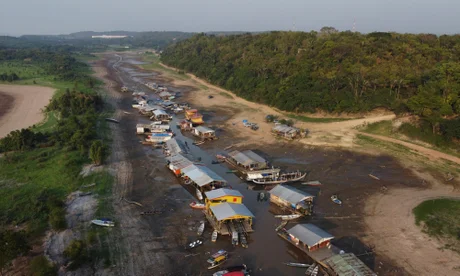New data has shown that Rivers dried up at the highest rate in three decades in 2023, putting global water supply at risk.
Over the past five years, there have been lower-than-average river levels across the globe and reservoirs have also been low, according to the World Meteorological Organization’s (WMO) State of Global Water Resources report.
Recall that In 2023, more than 50% of global river catchment areas showed abnormal conditions, with most being in deficit. This was similar in 2022 and 2021. Areas facing severe drought and low river discharge conditions included large territories of North, Central and South America; for instance, the Amazon and Mississippi rivers had record low water levels. On the other side of the globe, in Asia and Oceania, the large Ganges, Brahmaputra and Mekong river basins experienced lower-than-normal conditions almost over the entire basin territories.
Climate breakdown appears to be changing where water goes, and helping to cause extreme floods and droughts. 2023 was the hottest year on record, with rivers running low and countries facing droughts, but it also brought devastating floods across the globe.
Read also: Report: Deforestation ‘roaring back’ despite 140-country vow to end destruction
The extremes were also influenced, according to the WMO, by the transition from La Niña to El Niño in mid-2023. These are naturally occurring weather patterns; El Niño refers to the above-average sea-surface temperatures that periodically develop across the east-central equatorial Pacific, while La Niña refers to the periodic cooling in those areas. However, scientists say climate breakdown is exacerbating the impacts of these weather phenomena and making them more difficult to predict.
Areas that faced flooding included the east coast of Africa, the North Island of New Zealand, and the Philippines.
In the UK, Ireland, Finland and Sweden, there was above-normal discharge, which is the volume of water flowing through a river at a given point in time.
“Water is the canary in the coalmine of climate change,” said the WMO secretary general, Celeste Saulo. “We receive distress signals in the form of increasingly extreme rainfall, floods and droughts which wreak a heavy toll on lives, ecosystems and economies. Melting ice and glaciers threaten long-term water security for many millions of people. And yet we are not taking the necessary urgent action.
“As a result of rising temperatures, the hydrological cycle has accelerated. It has also become more erratic and unpredictable, and we are facing growing problems of either too much or too little water. A warmer atmosphere holds more moisture which is conducive to heavy rainfall. More rapid evaporation and drying of soils worsen drought conditions,” she added.
Story was adapted from the Guardian.
